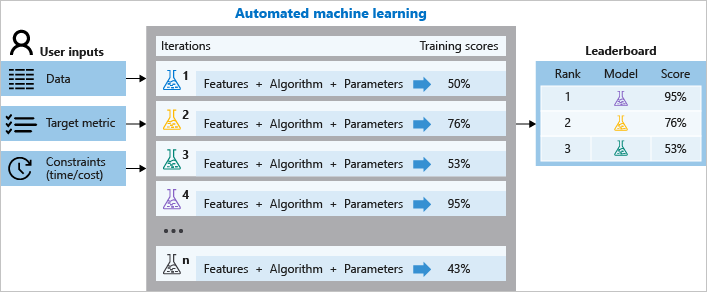Automated machine learning (AutoML) is a valuable tool for quickly understanding your data's predictive potential, freeing you from the time-consuming task of coding and running multiple machine learning algorithms to find one that performs well. AutoML benefits both beginners with surface-level ML knowledge and experienced practitioners. For beginners, it provides insight into whether machine learning will work with their data. For experts, it offers a quick and efficient foundation to begin their ML fine-tuning journey.
How Does AutoML Work?
During training, Azure Machine Learning creates many pipelines in parallel that try different algorithms and parameters for you. The service iterates through ML algorithms paired with feature selections, where each iteration produces a model with a training score. The better the score for the metric you want to optimise for, the better the model is considered to "fit" your data.

The Auto ML process (courtesy of Microsoft)
When to Use AutoML
Apply automated ML when you're not sure where to start. Often the best way to optimise prediction from machine learning is cleaning and augmenting the dataset itself, so get an idea if you can predict given your dataset, without lots of work.
AutoML can get over 6 hours, so don't be expecting immediate results. So put on the kettle and come back to it the next day once it's running.
AutoML supports several types of machine learning tasks:
Classification
Predict which categories new data fall into based on learnings from training data. Examples include fraud detection, handwriting recognition, and object detection.
Regression
Predict numerical output values based on independent predictors. Examples include predicting house prices or stock values.
Time-series Forecasting
Predict future values based on historical time-series data. Examples include revenue forecasting, inventory planning, and demand prediction.
Computer Vision
Generate models trained on image data for scenarios like image classification, object detection, and instance segmentation.
Natural Language Processing
Generate models trained on text data for text classification and named entity recognition scenarios.